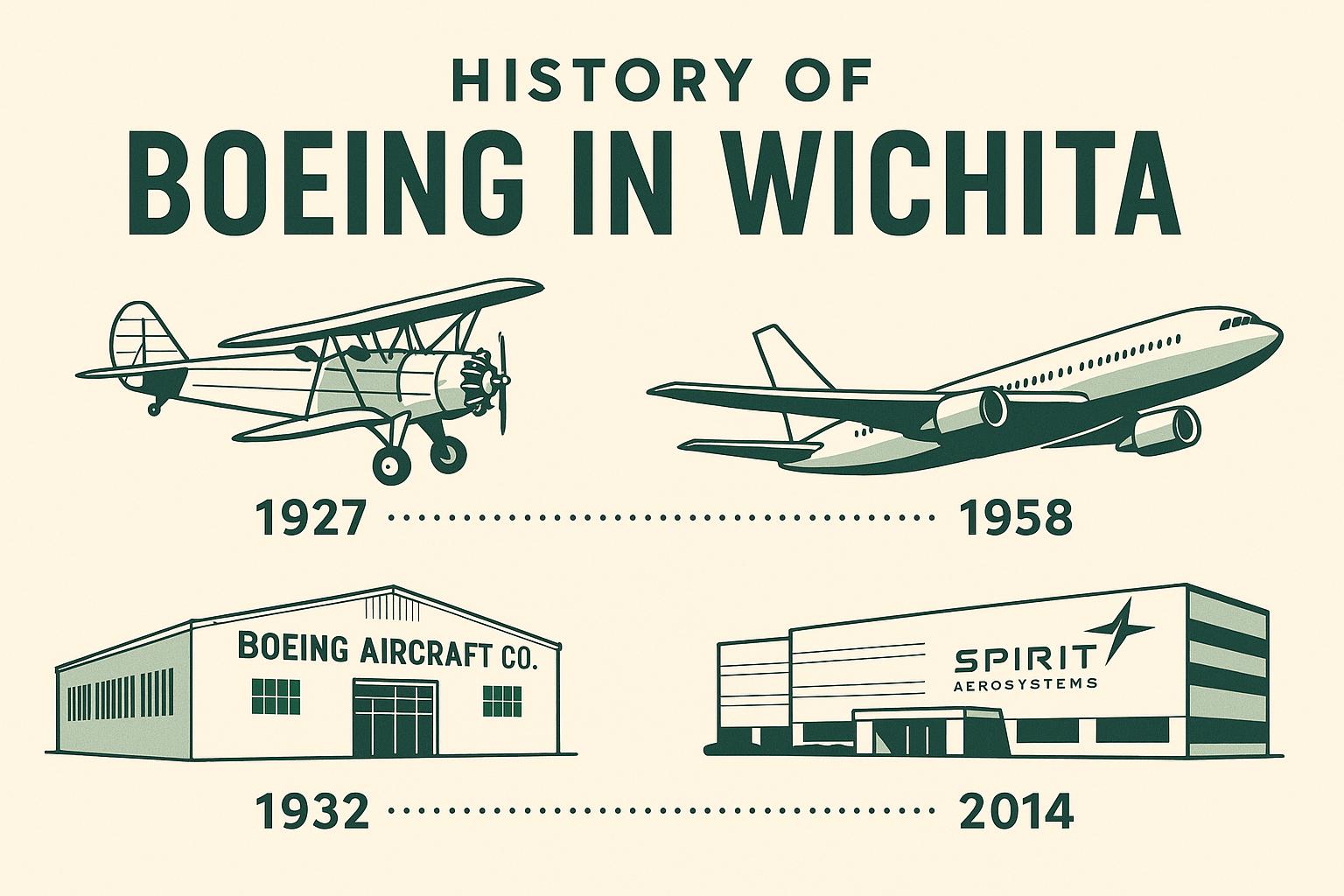Founding and Early Years
The history of Boeing’s engagement in Wichita, Kansas, is extensive and dates back to a pivotal moment in 1929. This was the year the Boeing Airplane Company took a significant step by acquiring the Stearman Aircraft Company, a well-established entity in the realm of aviation. Stearman Aircraft, which was founded in 1926, was highly regarded for producing biplane trainers. These aircraft trainers were essential in preparing pilots during a transformative period in aviation. The acquisition of Stearman by Boeing signaled the company’s ambitious intentions. It was a strategic move that underlined Boeing’s commitment to broadening its manufacturing capabilities, especially in a region that was destined to become a cornerstone of the aerospace industry.
The early years in Wichita were characterized by growth and consolidation, as the newly acquired operations were integrated into Boeing’s expanding portfolio. The decision to embed deeply in Wichita was not just about geographical expansion. It was a deliberate maneuver to harness the skilled workforce found in the area and to exploit the infrastructural advantages that Wichita offered. This partnership between Boeing and Wichita was the launchpad for a collaboration that would see decades of innovation and production success.
World War II and Post-War Expansion
World War II was a defining period for many industries, but it had a profound impact on Boeing’s operations in Wichita. The plant became an essential cog in the U.S. military-industrial complex, largely due to its impressive production of the B-29 Superfortress bombers. These aircraft were crucial to the Allied efforts in various theaters of the war. The plant’s capacity to produce a large number of bombers was not just a testament to its workforce’s efficiency but also to the strategic planning that had gone into its expansion.
As wartime activities ramped up, Wichita witnessed a significant influx of workers, transforming the city into a vibrant hub of economic activity. This period also fostered a sense of community and purpose among the workers, who were acutely aware of their contribution to the broader war effort. Following the cessation of hostilities, there was a natural transition from military to commercial airplane production. Boeing’s foresight in maintaining and even expanding operations in Wichita during peacetime reflected a keen understanding of the shifting landscape of global air travel and commerce.
The Jet Age and Boeing 737
The era of the 1950s and 1960s is often referred to as the Jet Age, a time when air travel underwent revolutionary changes. This period heralded a new chapter for Boeing, which seized the opportunity to spearhead the production of commercial jets. Wichita stood out as a major player in this endeavor, contributing extensively to several aircraft models, the most noteworthy of which was the Boeing 737.
The Boeing 737, whose maiden flight was in 1967, was a testament to innovation and design excellence. The aircraft was designed to address the growing demand for reliable and efficient commercial air travel. The Wichita plant played a critical role in the 737’s production, helping establish it as one of the best-selling commercial jets in the world. This model’s success was not just a victory for Boeing but also for Wichita, which had evolved into a pivotal location for the aerospace sector.
Challenges and Changes
The journey was, however, not devoid of challenges. Over the years, Boeing’s operations in Wichita faced a range of issues that tested its resilience. These challenges included economic downturns, which inevitably affected demand. Furthermore, the dynamic nature of market demands required constant adaptation, while the increasing competition in the global aerospace industry imposed additional pressure.
In response to these multifaceted challenges, Boeing underwent substantial restructuring in the early 2000s. These strategic changes were crucial for staying competitive and adapting to the rapidly evolving market conditions. This period of restructuring also involved evaluating various operational processes and making tough decisions to enhance efficiency and sustain operations.
Transition to Spirit AeroSystems
A pivotal shift occurred in 2005 when Boeing decided to sell its commercial airplane operations in Wichita to a private equity firm. This transaction led to the formation of Spirit AeroSystems. This strategic decision marked a change in Boeing’s direct involvement in Wichita. However, it did not diminish the city’s role in aerospace manufacturing—quite the opposite.
Spirit AeroSystems emerged as a strong successor, continuing to produce key components for Boeing’s aircraft. This included essential parts for the 737, as well as components for the 747 and the newer 787 models. Wichita, thus, maintained its reputation as a central hub for aerospace manufacturing, now under the aegis of Spirit AeroSystems.
For further exploration into the evolving relationship between Boeing and Wichita, and to understand Spirit AeroSystems’ current contributions and historical trajectory, interested individuals can explore Spirit AeroSystems’ official website. The website offers comprehensive insights into the company’s operations, innovations, and its integral role in the aerospace landscape.

